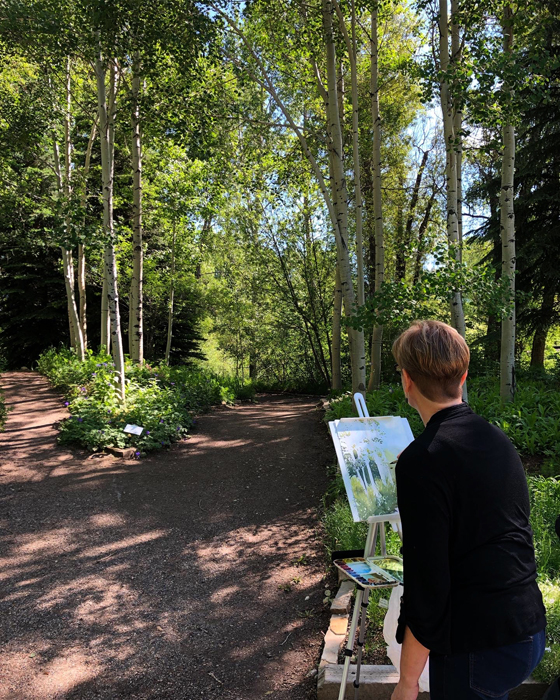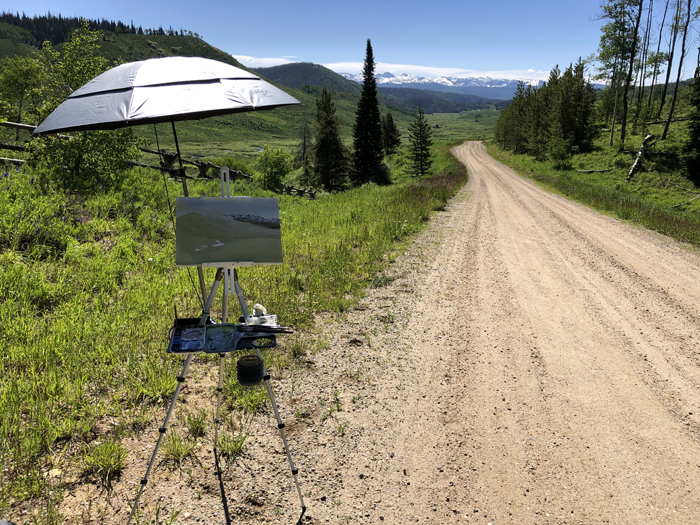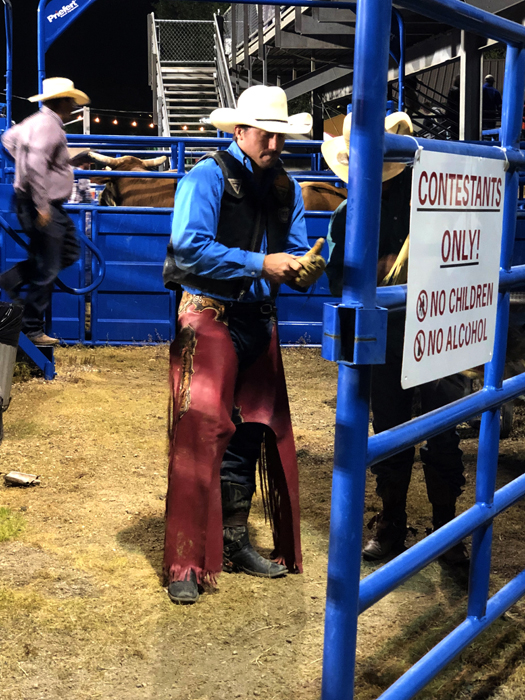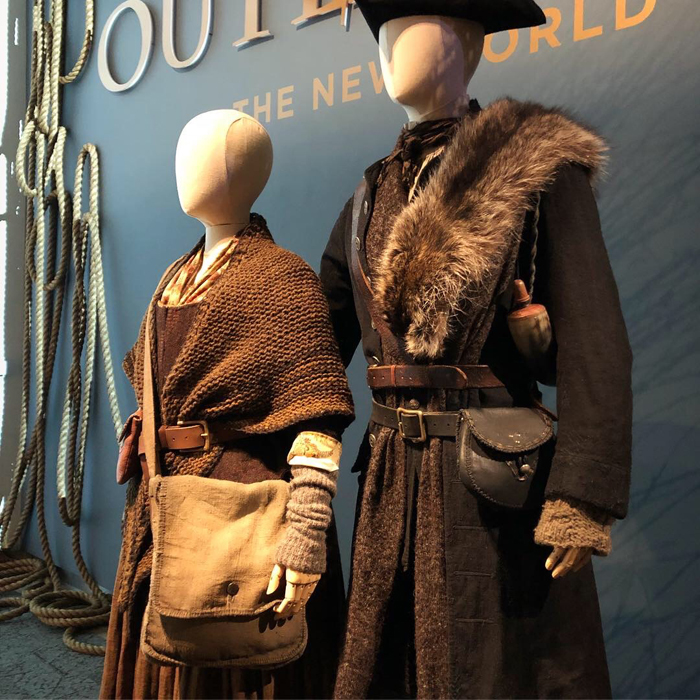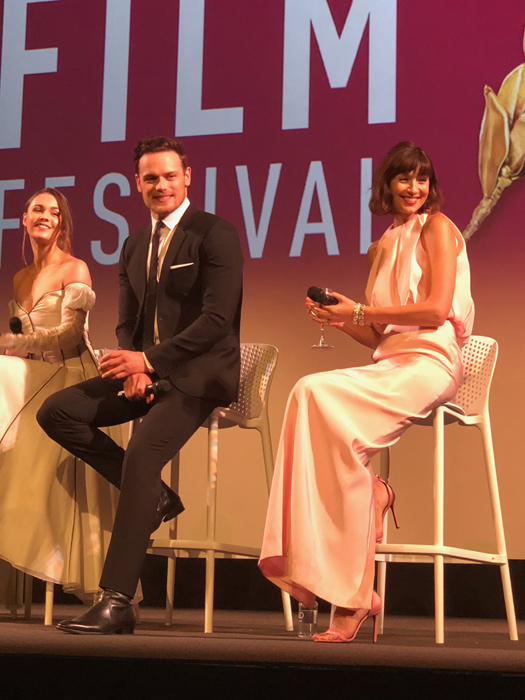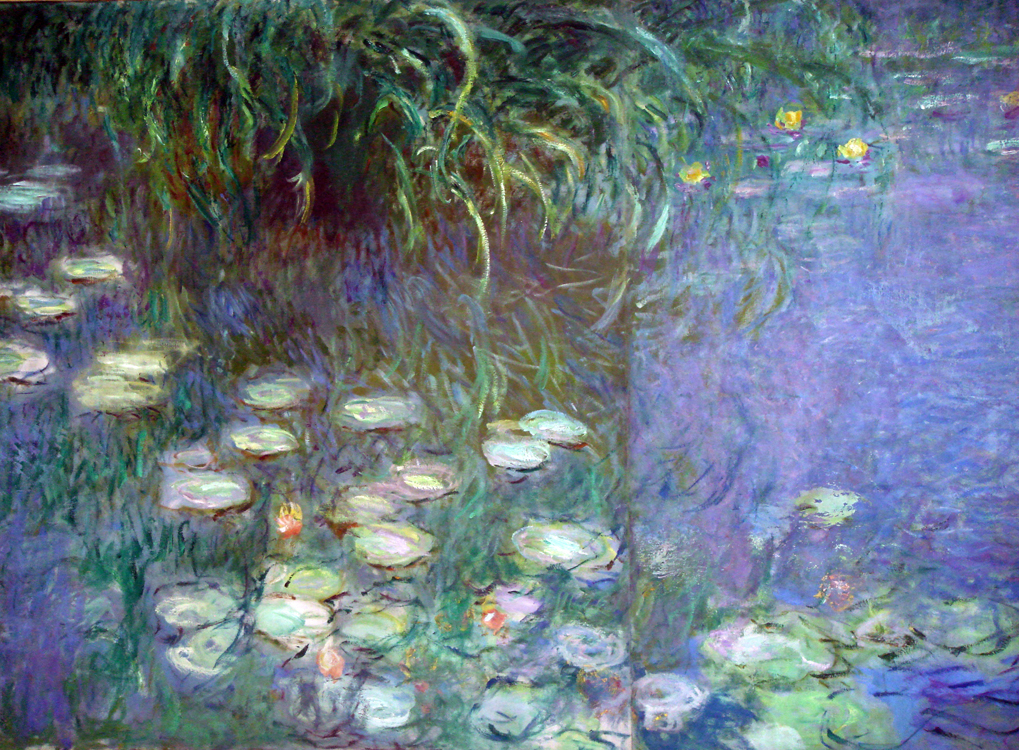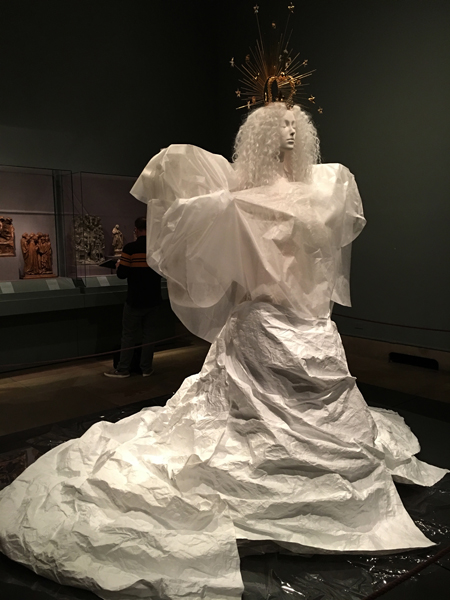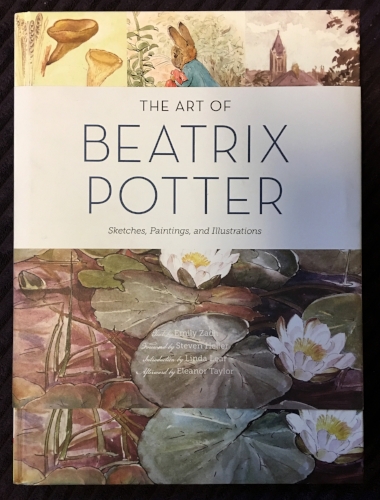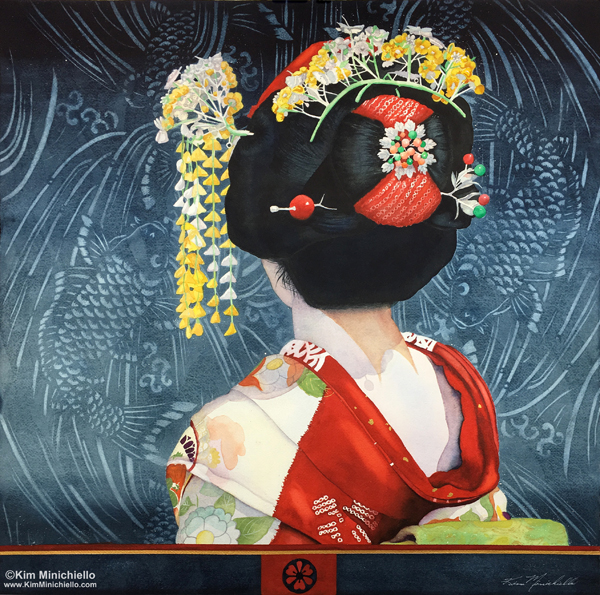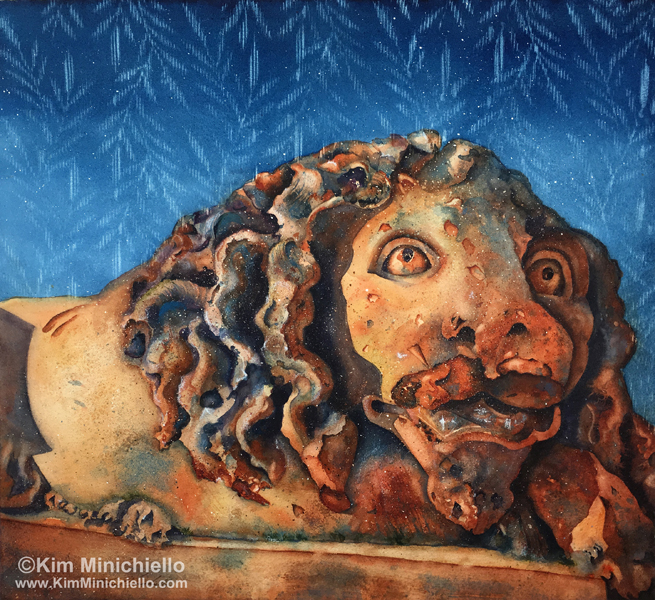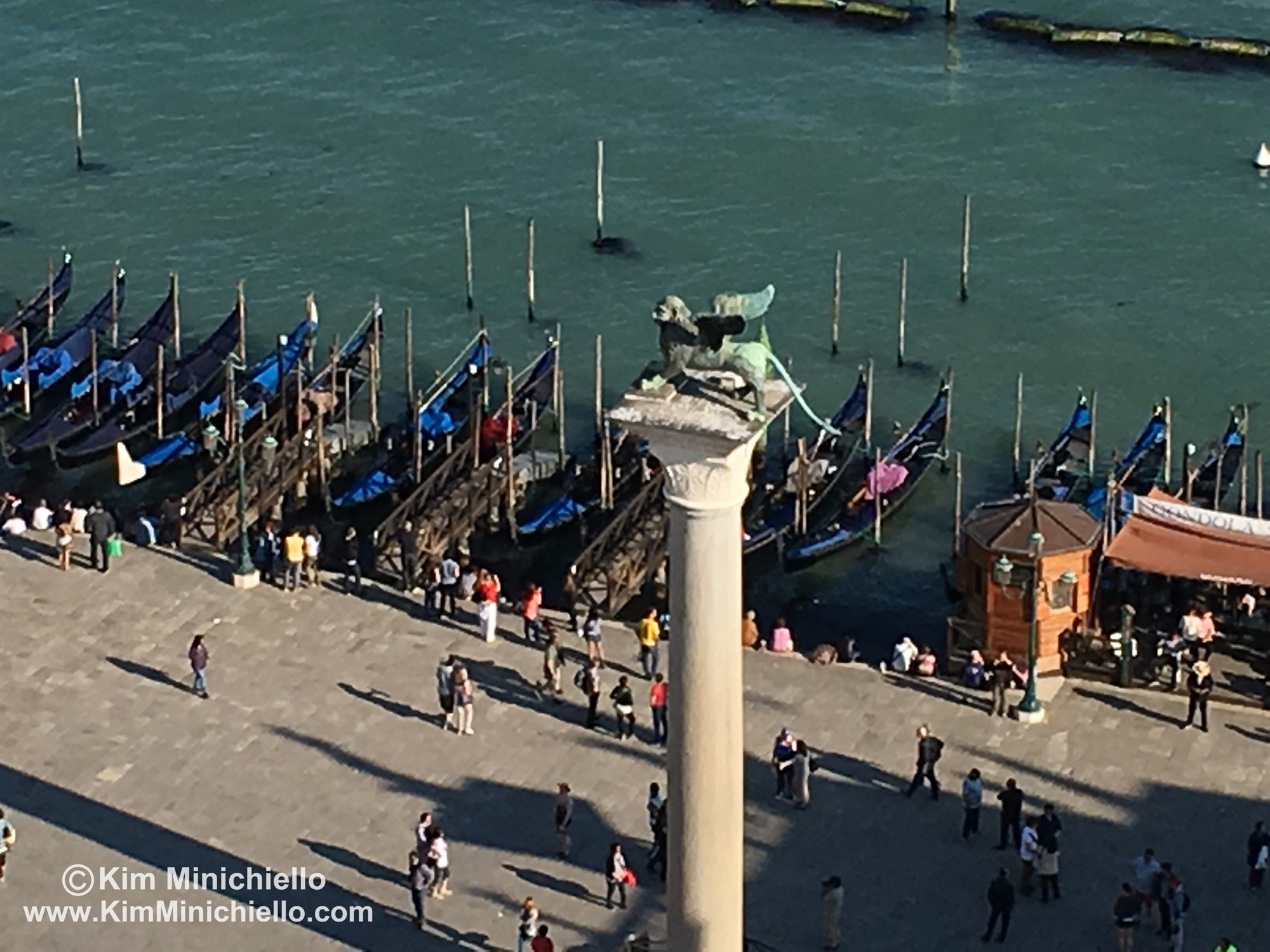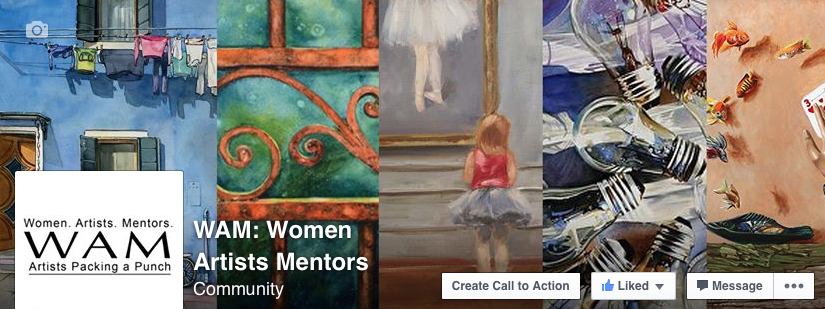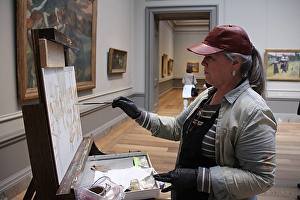Did you know that only 3-5% of the permanent holdings in art museums worldwide are by women artists? How pathetic is this? This is why American Women Artists a non profit art organization made of up women artists in the United States and Canada, made it their mission to do something about it. Founded in 1991 with 12 artists exhibiting at the Tucson Museum of Art it is now an organization comprising some of the top women artists today. AWA’s first juried competition was held in 1997-1998 and since then AWA has launched a 25 in 25 Campaign. Twenty five exhibitions in twenty five years in prestigious museums throughout the United States. These exhibitions include other events such as plein air paint outs, and keynote speaking symposiums, open to the public wherever the shows are being held.
Steamboat Art Museum
I was so impressed with the caliber of artists in this group and truly believed in their mission I joined a few years ago and am extremely proud to have just received Signature status with AWA. For those not familiar with what that means, Signature status is usually awarded to an artist who has been juried into 3 exhibitions with that particular group or society. Some groups it may take years to achieve. AWA also accepts a variety of media including sculpture into their shows.
My Painting “My Point of View,” Top Second From Left
Steamboat Art Museum
The most current AWA exhibition, Looking West: An Exhibition Highlighting Works by American Women Artists is at the Steamboat Art Museum in Steamboat Springs, Colorado. The show runs, May 24-September 2, 2019. I recently returned from all the events coinciding with the Opening Reception at the museum. There are approximately 150 works in the show and it was attended by almost half of the artists! It was a wonderful opportunity to make new friends and meet in person many artists whose work I have admired for years!
Steamboat Art Museum
Steamboat Art Museum
One of the events was a workshop given by Carolyn Anderson. Since I’m primarily a watercolor painter I didn’t take advantage of this opportunity. I’ve heard Carolyn is an excellent teacher. The first full day in Steamboat, a plein air event was organized in the Yampa River Botanic Park. I love visiting gardens when I travel, and was thrilled to see trees and flowers from a different climate than Florida. Since I’m not used to seeing Aspen trees, that is what I chose to paint.
Yampa River Botanic Park
Painting en Plein Air at Yampa River Botanic Part
Aspen Trees, Watercolor, Painted en Plein Air at Yampa River Botanic Park
That afternoon, Nancy Boren, gave a demonstration at the Wild Horse Gallery. Nancy is an artist I have long admired and I was thrilled to meet her and get to know her. Nancy is primarily a figurative painting and not only is her portfolio of work stunning, so was much of the other artist’s work represented in the Wild Horse Gallery. Visiting the gallery was an extra added bonus in addition to the AWA show.
Nancy Boren Demonstration at Wild Horse Gallery
The second day we were invited to the 83 acre ranch of well known Western Artist, John Fawcett. John is an oil and watercolor painter and I first came across his work in person at the 2017 Quest for the West Show at the Eiteljorg Museum in Indianapolis, Indiana. John and his wife, Elizabeth, where so gracious to host our group and provide a barbecue feast! This was my first experience painting snow capped mountains. Just three days before I arrived on the first day of summer Steamboat got about a foot of snow. Then the rest of the week it was in the mid 80’s. Crazy!
The Fawcett Ranch
My Plein Air Set Up
My Painting Buddy, Carol Swinney
Snow Capped, Watercolor, Painted en Plein Air
That afternoon invited guest artist Carol Carter, gave a demonstration. I was thrilled to get to spend time with Carol. She will be joining me again in September for the Florida Watercolor Society’s 48th Annual Exhibition, Convention, & Trade Show in Orlando. As President of FWS for 2019 I invited Carol three years ago to jury and judge the FWS Show and teach a 4 day workshop with us. I love Carol and I’m excited to see her again.
Carol Carter Demonstration
The third day was the Awards Ceremony and Opening Reception of the exhibition for the community and the museum patrons of the Steamboat Art Museum. At every museum show the museum, with a purchase award, acquires a painting from the show. Heide Presse will now have her painting, “Pursuing a Dream,” part of the museum’s permanent collection.
Heide Presse’s Special Exhibit, We Set Our Faces Westward…One Woman’s Journey 1839-1848
Four guest speakers made up the Symposium on the last day of festivities. Heidi Presse gave a talk on a major project she is working on, We Set Our Faces Westward… One Woman’s Journey 1939-1848. We were so fortunate to see a preview in the museum of some of Heide’s finished pieces and concepts for others she will be painting. This project tells the true story of pioneer women gleaned from her 1848 Oregon Trail journal. The lengths Heide has gone to to be as historically accurate as possible are mind boggling. Cant find a quilt, costume or bonnet to feature in a painting? Heide makes her own, historically accurate. The second speaker was invited guest artist Carol Carter who gave an extremely informative talk on how she built and maintains her art career.
Jann’s Book
The third presenter was Jann Haynes Gilmore, PhD, art historian, writer, and watercolorist. Jann’s passion are women artists who have historically fallen throughs the cracks, and feels their stories should be told. Jann spoke on a remarkable woman artist, Olive Rush, who was the first independent women to be part of the Santa Fe Artists. Independent refers to the fact that she did not become part of the group based on marriage or an affiliation with a man. Born in Indiana, studied illustration with noted illustrator Howard Pyle, (as did N.C. Wyeth), her story is fascinating. Jann has authored an impressive book on her life, Olive Rush: Finding Her Place in the Santa Fe Art Colony, which I’m looking forward to reading.
Donna Howell-Sickles Demonstration
At the end the Symposium noted Western artist Donna Howell-Sickles did a demonstration. Donna was inducted into the National Cowgirl Hall of Fame in 2007, and is the first woman artist to be asked to create the artwork for the Pendleton Round-Up in Pendleton, OR. It is the most iconic rodeo in the Professional Rodeo Cowboy Association. In Donna’s 40 year career she has featured the iconic cowgirl in her work.
To top off the week, a few of us went to the Steamboat Professional Rodeo! Another first for me to see a rodeo in person!
From left, Laurie Stevens, Kim Minichiello, Carol Swinney, Carol Carter
The Yampa River
The town of Steamboat was so beautiful and charming. It was hard to leave and come back to hot and humid Florida. I’m still on a high from my spectacular few days there! No pun intended, or maybe it was.








